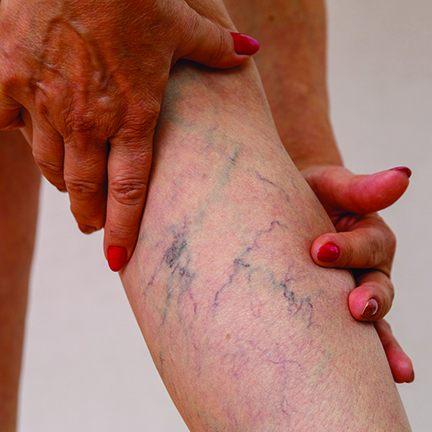Leg cramping may be something called PAD


Leg discomfort or cramping, while walking or ascending stairs? When pausing to rest, does the discomfort subside temporarily, only to return once resuming movement?
This recurring pattern of pain is referred to as intermittent claudication and can serve as an indicator of peripheral arterial disease (PAD).
In PAD, the blood vessels responsible for transporting blood to extremities become narrowed or obstructed, caused by build-up of plaque and calcification in the arteries. This impedes the flow of blood, primarily affecting the lower extremities.
Certain individuals face a higher risk of developing PAD. People at risk of PAD are specifically smokers, individuals with high cholesterol, those who are obese, over the age of 50 and those who experience pain, numbness or tingling during exercise, or an inability to exercise at all.
Identifying the signs of PAD is key to early intervention. Common indicators include leg numbness or pain during physical activity, hair loss on the legs, and a pale or cold appearance of the lower extremities. These symptoms should not be dismissed as mere signs of aging, as they could indicate a more serious underlying condition.
PAD can be diagnosed through various tests, such as CT scans or the ankle-brachial index (ABI), which measures blood pressure in the arms and legs to detect significant differences.
Early intervention is critical to stabilize arterial plaque and prevent further narrowing of the arteries. People with PAD are at risk for developing coronary artery disease and cerebrovascular disease, which could lead to a heart attack or stroke.
Smoking cessation is the top priority for anyone with PAD. Additionally, controlling blood pressure, managing weight, staying physically active and monitoring cholesterol levels – particularly bad cholesterol – are all integral components of a comprehensive treatment plan. Exercise can be one of the most effective tools in managing peripheral artery disease.




